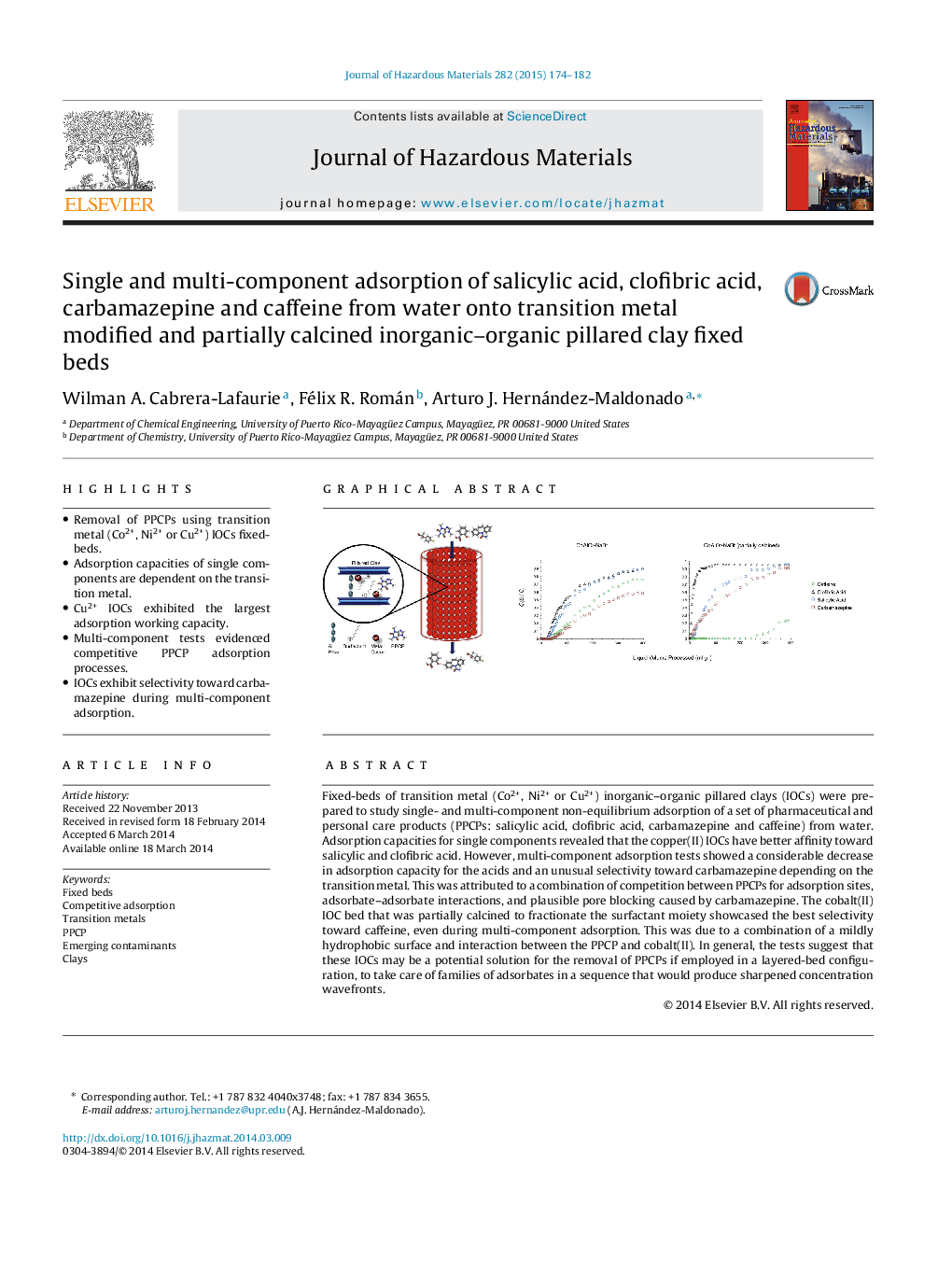| کد مقاله | کد نشریه | سال انتشار | مقاله انگلیسی | نسخه تمام متن |
|---|---|---|---|---|
| 576493 | 1453078 | 2015 | 9 صفحه PDF | دانلود رایگان |

• Removal of PPCPs using transition metal (Co2+, Ni2+ or Cu2+) IOCs fixed-beds.
• Adsorption capacities of single components are dependent on the transition metal.
• Cu2+ IOCs exhibited the largest adsorption working capacity.
• Multi-component tests evidenced competitive PPCP adsorption processes.
• IOCs exhibit selectivity toward carbamazepine during multi-component adsorption.
Fixed-beds of transition metal (Co2+, Ni2+ or Cu2+) inorganic–organic pillared clays (IOCs) were prepared to study single- and multi-component non-equilibrium adsorption of a set of pharmaceutical and personal care products (PPCPs: salicylic acid, clofibric acid, carbamazepine and caffeine) from water. Adsorption capacities for single components revealed that the copper(II) IOCs have better affinity toward salicylic and clofibric acid. However, multi-component adsorption tests showed a considerable decrease in adsorption capacity for the acids and an unusual selectivity toward carbamazepine depending on the transition metal. This was attributed to a combination of competition between PPCPs for adsorption sites, adsorbate–adsorbate interactions, and plausible pore blocking caused by carbamazepine. The cobalt(II) IOC bed that was partially calcined to fractionate the surfactant moiety showcased the best selectivity toward caffeine, even during multi-component adsorption. This was due to a combination of a mildly hydrophobic surface and interaction between the PPCP and cobalt(II). In general, the tests suggest that these IOCs may be a potential solution for the removal of PPCPs if employed in a layered-bed configuration, to take care of families of adsorbates in a sequence that would produce sharpened concentration wavefronts.
Figure optionsDownload as PowerPoint slide
Journal: Journal of Hazardous Materials - Volume 282, 23 January 2015, Pages 174–182